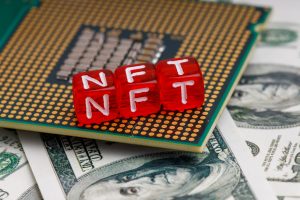Artists have been appropriating content from outside sources for centuries, but when it comes to NFTs, it may be a bit problematic. Appropriation art has garnered the attention of large companies such as Hermès of Paris, Inc., which is currently pursuing legal action against artist Mason Rothschild for appropriating their BIRKIN brand in his work. Other companies such as Nike are following suit with their own legal complaints.
But what is appropriation art, and when is it considered legal? Furthermore, how might the legal landscape surrounding this type of art look when it comes to NFTs? We’ll explore these questions in this article.
What Is Appropriation Art?
Appropriation art is simply creative work that takes existing work—such as aspects of well-known pieces of artwork—and uses it in an artistic way. Perhaps the most well-known appropriation artist in the U.S. is Andy Warhol, whose work featured everyday objects and brands.
While the use of existing creative work may implicate intellectual property laws, it’s not always the case that it does. In many instances, appropriation is perfectly legal if it doesn’t violate existing copyrights.
Of course, determining the legality of an individual piece of appropriation art is frequently a muddy affair. Some of the criteria that courts may examine include the following.
Transformative in Nature – Copyright and Fair Use
If a piece of artwork uses elements of existing creative works, one way to determine its legality is to see if it is sufficiently transformative in nature. The artwork should build upon and transform the appropriated elements in order to be considered legal. In other words, there should be some creative work involved rather than simply stealing imagery from other artists.
Sometimes this can be a hazy area, and the matter of what counts as transformative or not is frequently a matter of intense debate.
Trademarked Material and the First Amendment
In pieces of artwork that use an organization’s trademark—such as is the case with the Hermès lawsuit—the situation looks a little different. Rather than determine whether the work is sufficiently transformative, the question focuses on whether the appropriated trademark is used in a way that is artistically relevant to the work. This is because the First Amendment (which covers free speech) may be implicated. If its purpose is artistic expression, then ruling against it may violate the artist’s First Amendment rights.
Courts have often used what is called the Rogers test to determine if a piece of appropriation art falls under First Amendment protection. The test examines whether the underlying trademark is used in an artistically relevant way or misleads the audience as to the content’s source.
If the mark is artistically relevant and if it doesn’t mislead the audience, then it is considered to be protected as free speech.
Genuine Artistic Motive
This test isn’t perfect, of course. In some cases, it may leave trademark owners with little to no protection, so courts have devised a test to attempt to evaluate whether the artist truly has an artistic motive in using the mark in their work. This is called the “Genuine Artistic Motive” test, and it examines these areas:
- Whether the artist used the mark to identify similar goods or services to those so marked by the owner.
- How much expressive content was added to the work beyond the mark itself.
- Whether the timing of the work suggests an intention to capitalize on the mark’s popularity.
- Whether the artist made any public or private statements or engaged in conduct that indicates a non-artistic motive.
With this test, a piece of appropriation art may be found to violate trademark law while technically passing the Rogers test.
Can You Use Existing Assets to Create NFTs?
This all brings us to this question: can you use existing assets to create NFTs? The answer is yes, but you have to be careful. It may help to look at your intentions and how much artistic expression you’re putting into the NFT’s underlying artwork. If your primary motive is profit alone, then there may be some doubt as to whether your use of existing trademarks or other material is genuinely artistic.
If you are an artist who enjoys creating art and happen to use pieces of existing work as your medium of choice, then you should be safe as long as your creations are transformative enough to fall under fair use.
Can You Purchase NFTs with Appropriation Art?
For anyone wanting to purchase NFTs of appropriation art, it’s worth taking the utmost care when making purchasing decisions. As long as the work falls under fair use and utilizes content in artistically creative ways, it may technically be commercialized. However, that doesn’t make it free from potential lawsuits as artists or trademark holders may still decide to pounce, regardless of legality.
It also depends on what rights are actually transferred with the sale of the NFT. If the seller proposes to transfer the full copyright, it could get problematic if the NFT illegally uses previously copyrighted material.
As always, caveat emptor.


